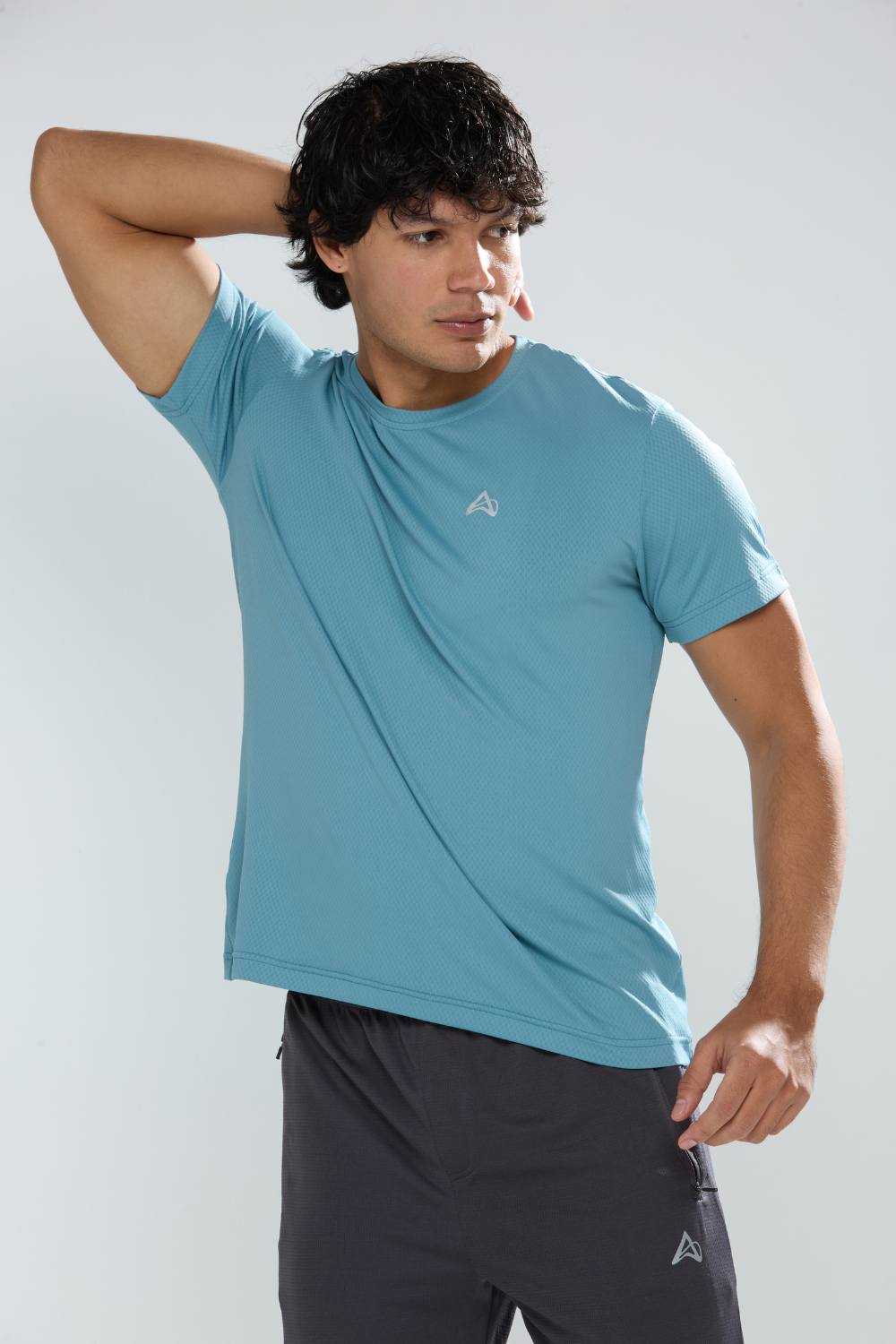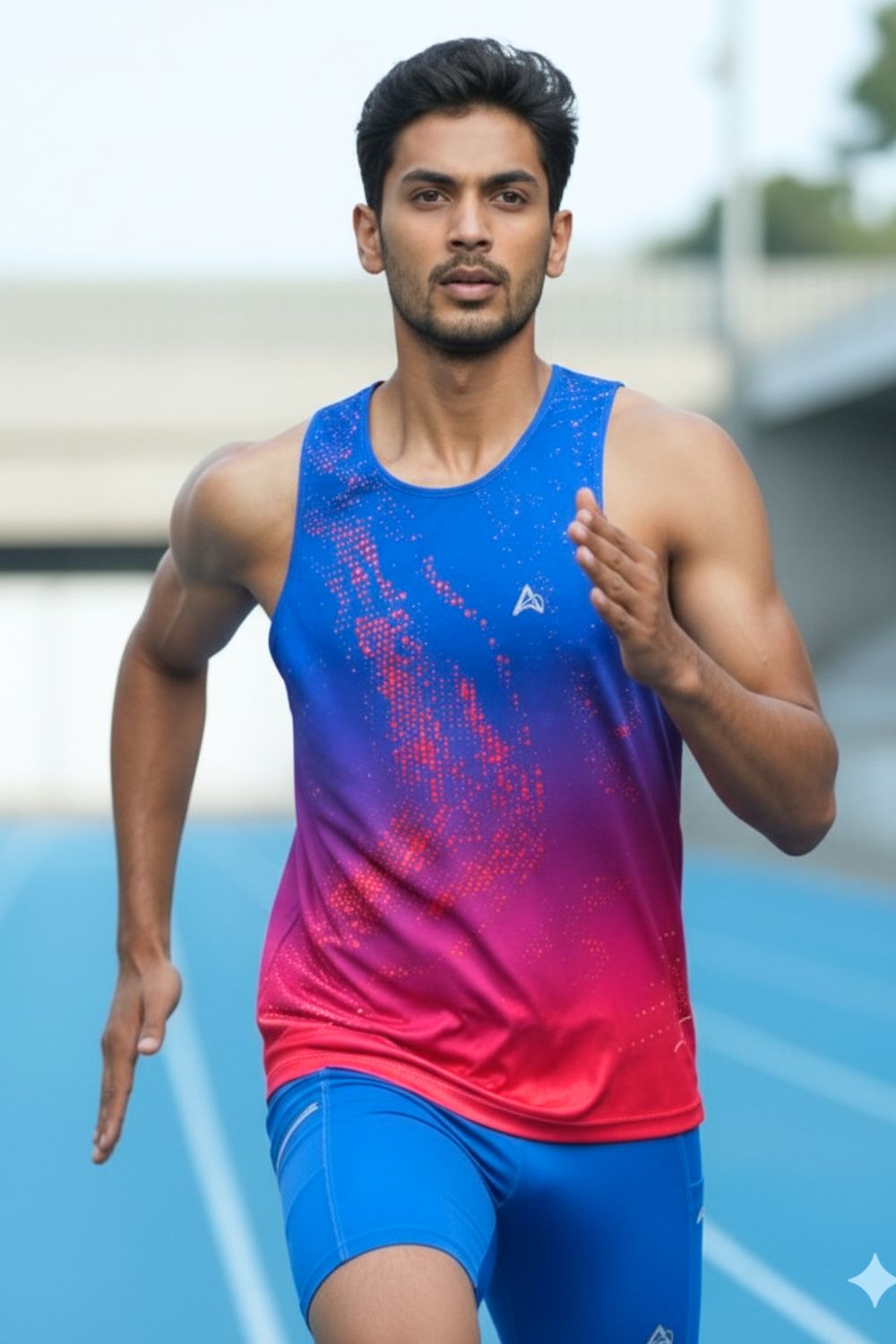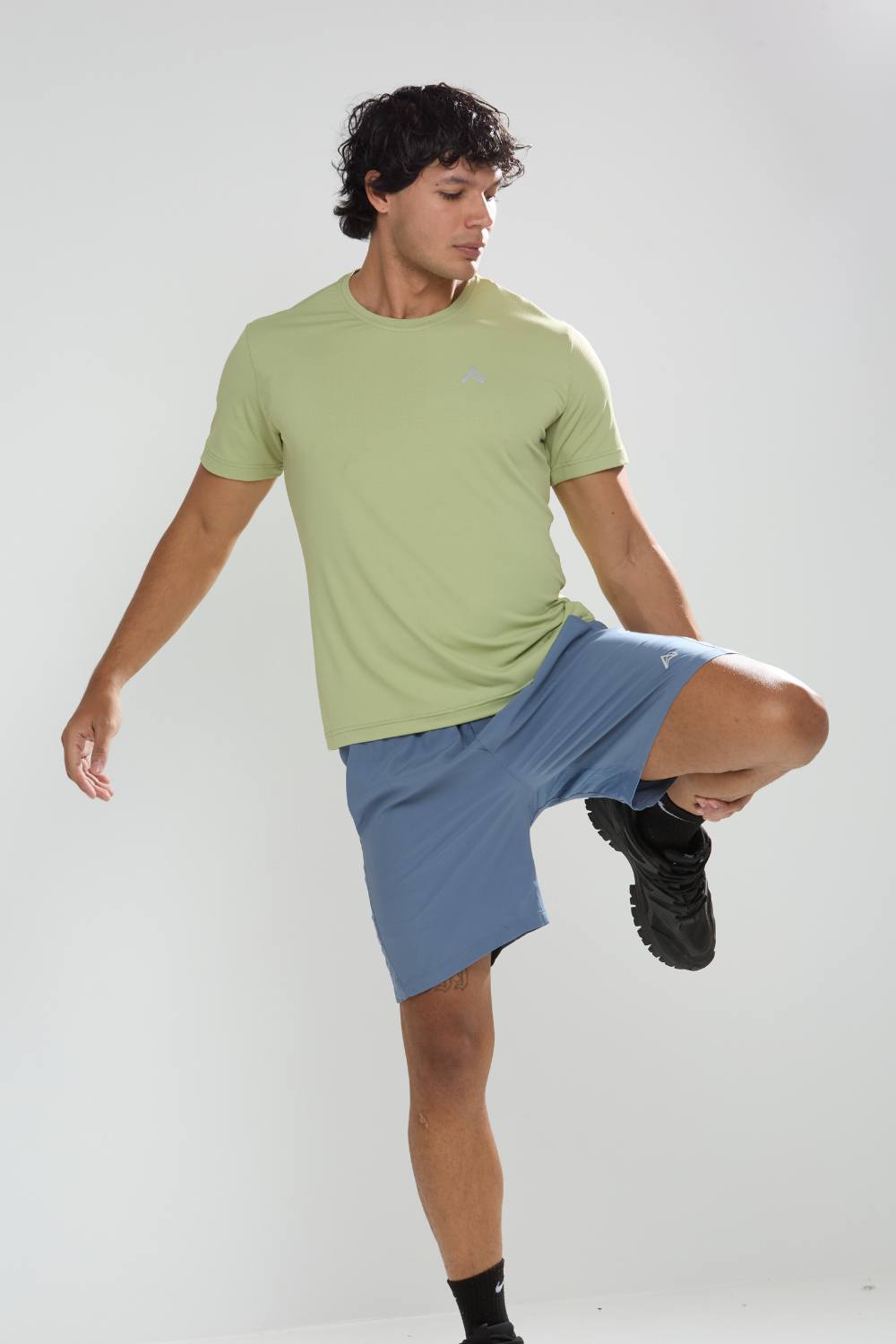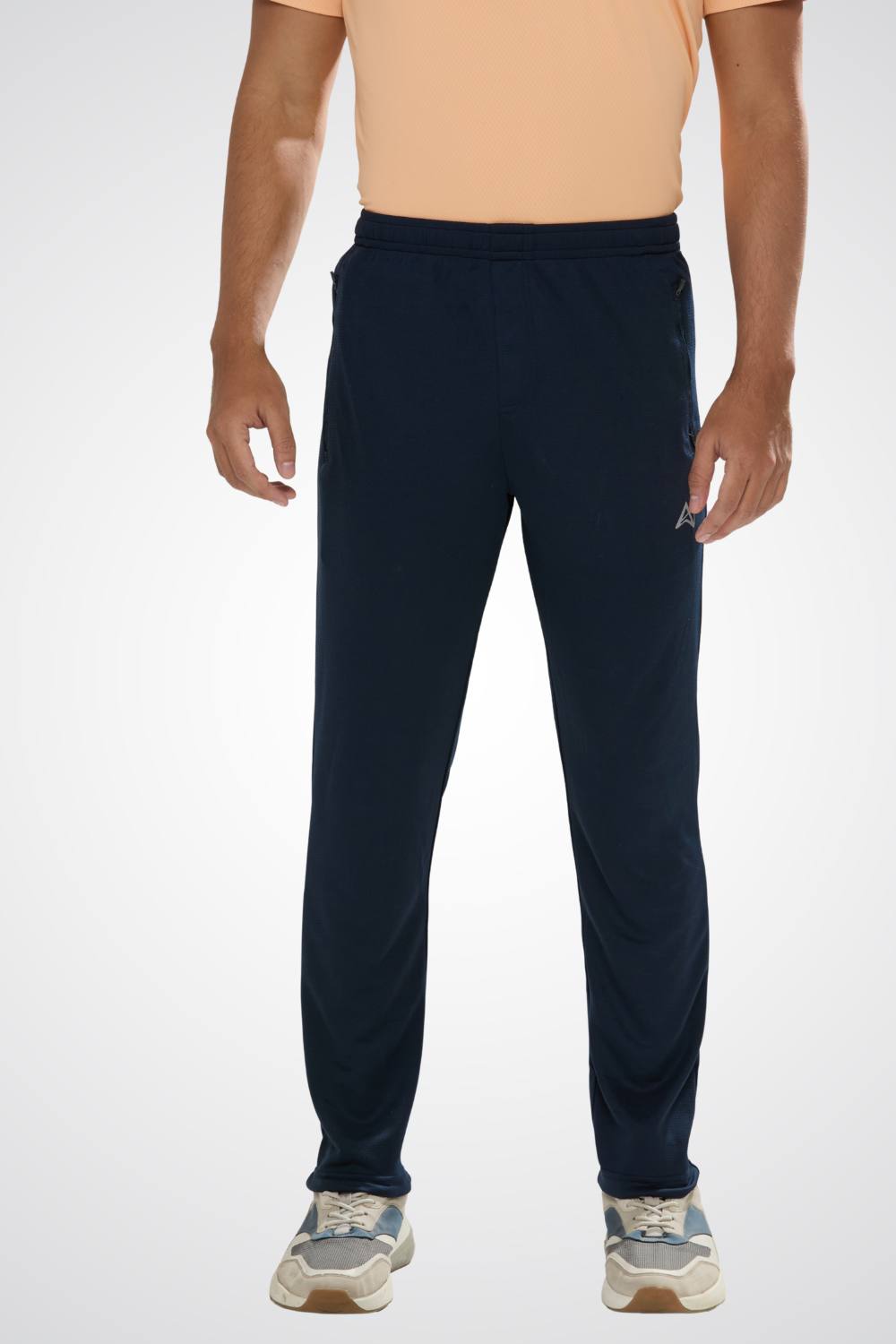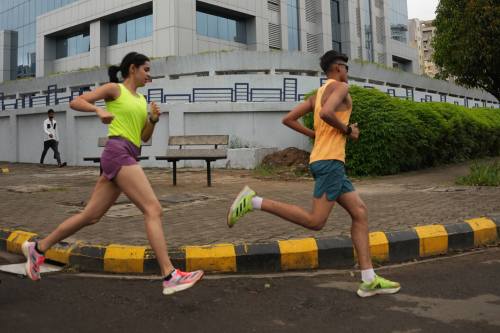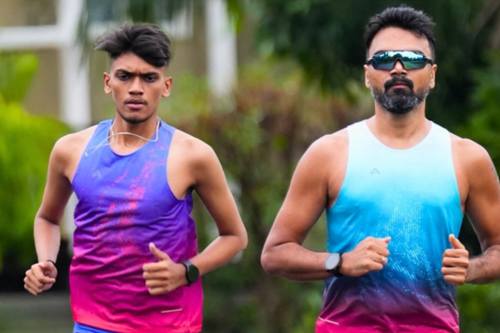Quick Listen:
The clang of weights echoes through a bustling gym, where a coach adjusts a lifter's form mid-rep, ensuring every muscle fires just right. Meanwhile, halfway across the world, another trainee mirrors the movement in a sunlit home studio, receiving the same precise cues through a high-definition video feed on their tablet. This seamless blend of physical presence and digital reach defines hybrid coaching a dynamic approach that's not merely adapting to our fragmented lives but elevating athletic performance to new heights. In the performance activewear sector, where innovation meets sweat, brands are retooling their arsenals to fuel this evolution, crafting gear that thrives in both virtual realms and real-world grind.
Tired of gear that slows you down? Chafing, soggy fabrics, and missing pockets kill your run's momentum. At Aguante, we're runners who get it. Our high-performance activewear features moisture-wicking fabrics, ergonomic designs, and smart storage to keep you focused. Shop Now!
A New Era of Athletic Coaching
Hybrid coaching, which merges remote virtual interactions with hands-on in-person guidance, has firmly planted itself as a cornerstone of contemporary fitness regimens. This model thrives on the flexibility craved by a post-pandemic populace, delivering tailored advice without the constraints of geography or rigid timetables. Drawing from comprehensive industry evaluations, the worldwide arena for online coaching encompassing virtual and remote modalities conducted via internet-based tools like video conferences, telephony, and instant messaging encompasses diverse domains from health and fitness to professional advancement, boasting a 2022 valuation of $3.2 billion and a trajectory toward $11.7 billion by 2032, propelled by a 14% compound annual growth rate through the coming decade.
What makes this surge compelling is its resonance across demographics: elite competitors honing edges through data-driven tweaks, casual enthusiasts carving out consistency amid packed days. Activewear giants, traditionally champions of moisture-wicking fabrics and ergonomic cuts, now confront a mandate to innovate beyond the mat. Their latest lines incorporate seamless tech integrations think embedded sensors in compression shorts that sync with coaching apps ensuring apparel doesn't just endure the workout but actively enhances it. As hybrid models proliferate, these brands position themselves as indispensable allies, bridging the tactile immediacy of gym-floor corrections with the analytical precision of remote analytics.
Consider the broader implications: in an era where work-from-home blurs into work-out-from-home, hybrid coaching democratizes access to expertise once reserved for urban elites. A trail runner in remote Montana can dissect stride inefficiencies via app feedback, then apply them during a coached trail session, all clad in versatile layers that repel mud and monitor vitals. This isn't ancillary; it's transformative, fostering sustained engagement and measurable progress that keeps athletes returning and brands thriving.
Why Hybrid Coaching Is Taking Over
The ascent of hybrid coaching traces a clear arc from crisis-born improvisation to intentional strategy. When lockdowns shuttered facilities worldwide, trainers pivoted to digital lifelines, unearthing a vein of untapped potential in virtual delivery. Today, that pivot has solidified into preference, with platforms evolving to support sophisticated blends of modalities. Market projections underscore this momentum: the sector for coaching platforms, valued at $3.8 billion as of 2025, anticipates scaling to $11.1 billion by 2035, advancing at an 11.2% CAGR, with over 61% of corporate investments channeling into HRIS-compatible, scalable solutions that prioritize career development holding about 28% market share while regions like Asia Pacific, including powerhouses China and India, lead expansion thanks to 40-55% reduced setup expenses in markets such as Brazil and Indonesia.
At the heart of this takeover lies wearable technology, now the undisputed frontrunner in fitness innovations for 2025, according to the American College of Sports Medicine's annual survey. Devices once limited to step counts now dispense AI-powered coaching, dissecting biometrics for form critiques, recovery advisories, and even sleep optimizations turning passive trackers into proactive partners. For activewear, this means a pivot toward "smart" textiles: leggings woven with conductive threads that relay muscle activation data to a coach's dashboard, or sports bras that pulse with heart-rate alerts during virtual HIIT bursts. Such integrations appeal universally, from podium-aspirants refining techniques to desk-bound professionals injecting mobility into lunch hours, cultivating an ecosystem where bespoke training scales effortlessly.
Hybrid training itself fusing strength, cardio, and mobility into fluid, lifestyle-aligned routines exemplifies this shift, with data indicating a surge in demand for varied, functional sessions that combat monotony and boost adherence. In 2025, expect hybrid HIIT classes to dominate, mashing live-streamed intensity with on-site camaraderie cycling sprints yielding to bodyweight circuits under a trainer's hybrid gaze ideal for calorie-torching efficiency amid harried schedules. Activewear responds in kind, prioritizing multi-functional designs: breathable, four-way-stretch fabrics that wick sweat during explosive efforts yet layer comfortably for recovery walks, ensuring performers stay equipped across hybrid horizons.
Real-World Wins and Brand Moves
Forward-thinking activewear leaders are embedding hybrid coaching into their DNA, forging ecosystems where apparel, apps, and advisory converge for unparalleled outcomes. Nike's ecosystem, anchored by its Training Club app, now seamlessly pairs app-curated virtual regimens with localized bootcamps, leveraging augmented reality overlays for form analysis that translates directly to in-gym drills. Adidas advances similarly through Runtastic, which harmonizes with proprietary wearables to furnish instantaneous coaching cues, whether plotting a remote tempo run or dissecting a live pitch-side session. Under Armour's MapMyRun suite extends this paradigm, enabling athletes to broadcast metrics from sensor-infused kits to trainers in real time, collapsing distances between a solitary jogger in Idaho's backcountry and a Manhattan-based mentor.
These aren't isolated feats; they're emblematic of a sector-wide recalibration. Boutique operations amplify the trend, proffering tiered memberships that interlace on-demand video libraries with periodic in-studio refinements virtual yoga flows segueing into tactile alignment tweaks. A Seattle-based CrossFit affiliate, for instance, logged a 20% enrollment spike post-hybrid rollout, attributing gains to the liberty of domicile-based consistency punctuated by communal intensity. On the competitive front, a California collegiate swimmer shattered personal records via a regimen melding pool-edge scrutiny with off-site virtual therapeutics, mitigating overuse while amplifying stroke efficacy all sustained in activewear engineered for aquatic-to-dry transitions.
Beyond majors, emergent trends like Hyrox races functional gauntlets blending runs with stations like sled hauls, which have doubled in footprint since 2023 demand apparel that endures hybrid rigors: grippy, ventilated gloves for weighted pulls paired with moisture-managing tops for sustained cardio. Pickleball's 36% participation boom since 2023 further spotlights versatile kits lightweight shorts with secure pockets for paddles, ensuring seamless shifts from court to coaching debriefs. As brands like these iterate, they don't merely vend garments; they architect holistic performance narratives.
The Hurdles of Going Hybrid
Yet, for all its promise, hybrid coaching navigates treacherous terrain. Remote interfaces, while expansive, often forfeit the subtle diagnostics of flesh-and-blood oversight a virtual lens might miss a micro-tilt in posture that spells injury down the line. Resource-strapped independents grapple with outlays for robust tech stacks: premium webcams for lag-free streams, or API bridges linking wearables to platforms, straining budgets in an already margin-thin field. Analyses highlight these frictions, observing that elevated program expenses and certification inconsistencies could impede expansion in developmental coaching spheres, fitness inclusive, even as organizational outlays on managerial upskilling burgeon.
Privacy looms large too, as wearables harvest intimate dossiers pulse variabilities, repose cycles prompting valid qualms over data custodianship in an era of breaches. The digital deluge compounds this: with apps proliferating, discerning signal from noise demands savvy curation, lest users disengage from option overload. Nonetheless, vitality persists. Encompassing wellness domains like fitness, the life coaching domain clocked $3.64 billion in 2025, charting course for $5.79 billion by 2030 via a 9.71% CAGR, with Asia Pacific accelerating fastest while North America retains primacy, buoyed by innovation-centric ethos. For activewear stewards, these pitfalls double as prompts: forge privacy-fortified fabrics, affordable tech hybrids, and standout designs that cut through the clutter.
Mind-body fusions, up 15% in mindfulness-infused sessions per 2024 wellness tallies, underscore adaptive needs supple, non-binding attire for yoga-pilates melds that span virtual flows to in-person harmonies. Navigating these ensures hybrid's hurdles become stepping stones.
Opportunities in Stitches and Sensors
The vista brims with prospect. Activewear innovators are pioneering "intelligent" textiles: sensor-thronged tights interfacing with AI coaches for gait corrections, or thermoregulating shells ideal for outdoor-virtual pivots. Sector insights reveal digital coaching platforms at 41% adoption, group formats ascending 28%, amid a 36% uptick in hybrid model embrace fueling 38% climbs in leadership enrollments and 41% surges in optimization demands. This begets novel streams: apparel subscriptions bundling monthly deliveries with proprietary hybrid access, or eco-conscious lines sustainable weaves for the 2025 surge in green gear that lure discerning millennials.
Collaborations flourish across silos. Fitbit's alliances with apparel behemoths yield unified experiences: envision a bra that cradles while charting exertion, piping intel to remote strategists. With 44% of fresh pacts outcome-tethered and managerial coaching averaging $690 per head in bundled formats, brands attune products to quantifiable wins kits that propel personal records or trim sprint times. Remote locales gain equity, trainers scaling globally sans overheads, per evolving hybrid paradigms that blend live check-ins with automated nudges.
Longevity lenses amplify this: functional fitness prioritizing mobility low-impact like Pilates hybrids calls for recovery-centric activewear, compression sleeves aiding post-session rebound amid wellness's ascent. Outdoor booms, with 28% more events in 2024, necessitate UV-shielding, trail-tough ensembles for hybrid adventures. Here, opportunity stitches innovation to impact.
The Future of Fitness: Hybrid Horizons
Hybrid coaching transcends novelty; it's the inexorable trajectory, with activewear as its steadfast vanguard. Prognostications from fitness vanguard peg it as default within ten years, mirroring kin sectors like leadership coaching valued at $88.39 billion in 2023, expanding at 8.08% CAGR to 2029 where bespoke, one-on-one evolutions from rote seminars empower navigational prowess in turbulent terrains. Apparel evolves accordingly: no longer mere coverings, but enablers of data-orchestrated existences, every lunge or leap refined by amalgamated acumen.
Envision the tableau: an athlete threading into neural-laced runners, queuing a digital prelude, then storming the floor for embodied mastery all sheathed in symbiotic suiting that anticipates, adapts, amplifies. As virtual veils thin against corporeal canvases, hybrid's verdict rings unequivocal: tomorrow's training is pliant, interlinked, and impeccably attired for triumph. In this fused frontier, performance isn't pursued it's precision-engineered.
Frequently Asked Questions
What is hybrid coaching and how does it work in fitness?
Hybrid coaching merges remote virtual interactions with hands-on in-person guidance, allowing athletes to receive tailored training without geographic or scheduling constraints. This approach uses technology like video feeds, apps, and wearable sensors to deliver coaching cues remotely, while incorporating periodic in-person sessions for hands-on form corrections and community engagement. The model has grown from a $3.2 billion market in 2022 to a projected $11.7 billion by 2032, driven by its flexibility and effectiveness across all fitness levels.
How is activewear technology integrating with hybrid coaching platforms?
Modern activewear now features embedded sensors and smart textiles that sync with coaching apps to enhance training experiences. Examples include compression shorts with built-in sensors that track muscle activation, sports bras that provide heart-rate alerts during virtual workouts, and leggings with conductive threads that relay data to coache's dashboards. Major brands like Nike, Adidas, and Under Armour have developed ecosystems where their apps seamlessly integrate with sensor-infused apparel to provide real-time coaching feedback.
What are the main benefits and challenges of hybrid coaching for athletes?
Hybrid coaching democratizes access to expert training, allowing athletes in remote locations to receive professional guidance while maintaining the flexibility to train at home or in local gyms. Benefits include data-driven performance improvements, cost-effective training options, and the ability to combine virtual consistency with in-person community support. However, challenges include potential privacy concerns with wearable data collection, technology costs for independent trainers, and the risk of missing subtle form issues that require in-person observation for injury prevention.
Disclaimer: The above helpful resources content contains personal opinions and experiences. The information provided is for general knowledge and does not constitute professional advice.
You may also be interested in: How Ergonomic Fit Improves Running Performance: A Deep Dive
Tired of gear that slows you down? Chafing, soggy fabrics, and missing pockets kill your run's momentum. At Aguante, we're runners who get it. Our high-performance activewear features moisture-wicking fabrics, ergonomic designs, and smart storage to keep you focused. Shop Now!
Powered by flareAI.co





